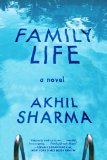Summary | Excerpt | Reviews | Beyond the book | Read-Alikes | Genres & Themes | Author Bio

Twelve-year-old Fern is named after Wilber's first friend in Charlotte's Web. Fern's older sister, Sara, is named after the Sarah in A Little Princess. Her older brother is named after Holden from The Catcher in the Rye, and her three-year-old brother after Charlie in the eponymous Charlie and the Chocolate Factory. Not exactly conventional parents, Fern's mother spends as much time as she can meditating in the office above the family restaurant, and her father spends just as much time brainstorming nutty advertising schemes that inevitably involve embarrassing the kids--all but Charlie who is game for anything.
Even though Fern and her siblings are named after fictional characters, and they, in turn, are fictional characters, it's tough to remember that they aren't real. Knowles imagines each one with such resonant details and pitch-perfect emotions that they could easily be the family that lives next door. They're funny, messy, complicated, and loving. They're dealing with emerging sexuality, bullying, sibling rivalry, and all sorts of other typical family and growing-up issues. They are, in a word, real.
Because they are so believable, and because Knowles writes with careful attention to every word in this tight, clear novel, Fern and her family wiggle their way into the reader's heart from the very beginning. Told from Fern's perspective, the plot is skillfully crafted to be both surprising and inevitable, so when a tragedy enters the story it's utterly devastating. The spot where Fern and her family entered the reader's heart becomes a giant fissure. With exacting details and authentically portrayed emotions--which range wide depending on which character is experiencing them--Knowles truthfully and beautifully depicts shock and grief.
Ultimately, Fern and her family find the pinprick of light that gives them the hope they desperately need. They will survive, together. In fact, the only way they'll survive is if they focus on what they unconsciously felt before the tragedy--that they are a connected family. The reader sees this from page one, because Knowles crafts such an emotionally convincing picture of the family. But it takes them a while to see it themselves.
Fern is a good and kind person, just like her namesake in Charlotte's Web. But she's not derivative of E.B. White's Fern. Jo Knowles creates a memorable fictional character that will endure in her own right. See You at Harry's is more than a pinprick of light; it's a bright sun shining down from a cloudless sky, the bright light of hope. And it's this hope that allows the reader's heart to mend itself, and like Fern and her family, the reader is stronger and wiser than she was before.
![]() This review was originally published in The BookBrowse Review in May 2012, and has been updated for the
August 2013 edition.
Click here to go to this issue.
This review was originally published in The BookBrowse Review in May 2012, and has been updated for the
August 2013 edition.
Click here to go to this issue.

If you liked See You at Harry's, try these:

by Jennifer Longo
Published 2016
Darkly humorous and heart-wrenchingly beautiful, Jennifer Longo's YA debut about a girl stuck living in a cemetery will change the way you look at life, death, and love.

by Akhil Sharma
Published 2015
Heart-wrenching and darkly funny, Family Life is a universal story of a boy torn between duty and his own survival.
Your guide toexceptional books
BookBrowse seeks out and recommends the best in contemporary fiction and nonfiction—books that not only engage and entertain but also deepen our understanding of ourselves and the world around us.